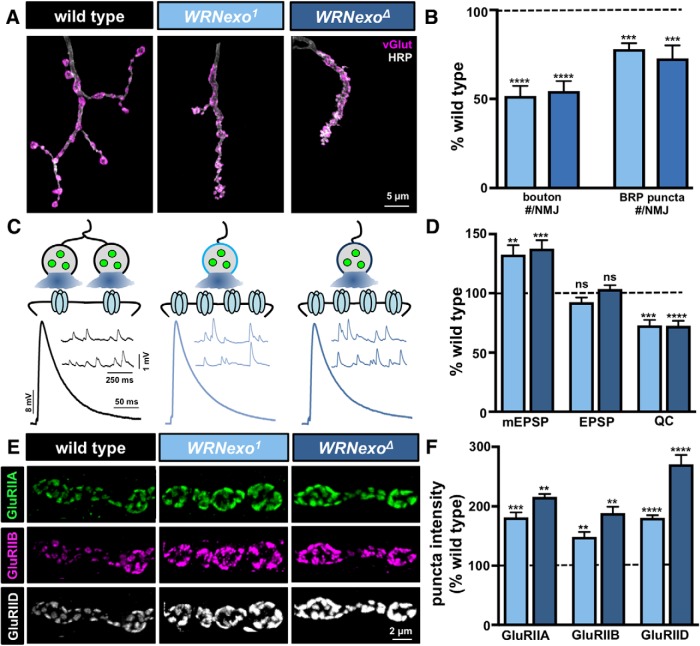Figure 5.
Increased postsynaptic receptor levels compensate for reduced presynaptic neurotransmitter release in WRNexo mutants. A, Representative images of muscle 4 NMJs in WT, WRNexo mutants (WRNexoMI13095), and WRNexo null mutants (WRNexoD), immunostained with anti-HRP and anti-vGlut. B, Quantification of bouton numbers and BRP puncta numbers in WRNexo mutants normalized as a percentage of WT. C, Representative mEPSP and EPSP traces in the indicated genotypes. The schematic illustrates that enhanced levels of postsynaptic glutamate receptor levels offset reduced presynaptic release in WRNexo mutants with reduced bouton and BRP puncta numbers. D, Quantification of mEPSP, EPSP, and quantal content values in the indicated genotypes normalized as a percentage of WT. E, Representative images of NMJs immunostained with antibodies against three postsynaptic glutamate receptor subunits (GluRIIA; GluRIIB; GluRIID). F, Quantification of sum puncta fluorescence intensity of each receptor subunit reveals enhanced levels of both GluRIIA- and GluRIIB-containing receptors in WRNexo. Error bars indicate ± SEM. One-way ANOVA test was performed, followed by a Tukey's multiple-comparison test: **p ≤ 0.01; ***p ≤ 0.001; ****p ≤ 0.0001. ns, Not significant (p > 0.05). Detailed statistical information (mean values, SEM, n, p) is shown in Table 4-1).

